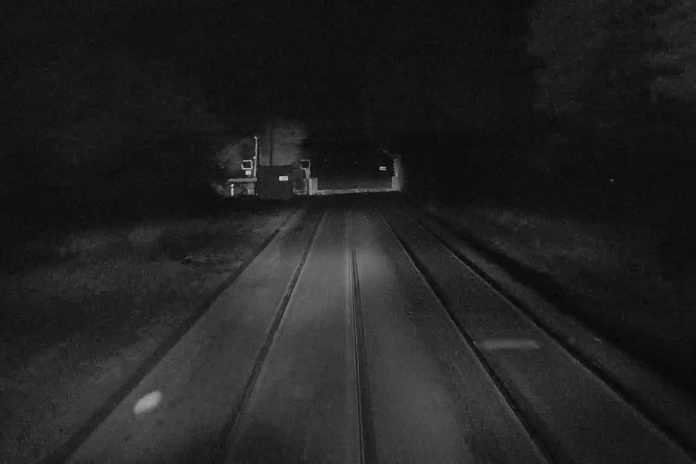Summary
On 24 November 2019, the barriers at Norwich Road level crossing, near New Rackheath, Norfolk, lifted as a passenger train from Norwich to Sheringham was approaching. Two road vehicles crossed the railway in front of the train, which reached the crossing less than half a second after the second road vehicle was clear.
The investigation found that there was contamination of the railhead in the area caused by leaf-fall and atmospheric conditions. This contamination had not been removed because there were no railhead treatment trains on the Norwich to Sheringham line at weekends. The narrow band on which trains’ wheels were running on the contaminated railhead, which was a consequence of the introduction of new trains, left the wheel-rail interface vulnerable to a poor electrical contact in the event of contamination. This caused the level crossing equipment to misinterpret the position of the train, and consequently it opened the crossing to road traffic while the train was closely approaching.
Recommendations
RAIB has made three recommendations addressed to Network Rail regarding the planning of autumn railhead treatment, guidance on the introduction of new trains and the configuration control of signalling equipment. RAIB also identified two learning points concerning the investigation of incidents and the signalling design process.
Simon French, Chief Inspector of Rail Accidents said:
“All too often the interaction between road users and the railway at level crossings leads to incidents and accidents. In many cases the actions of the road user are the immediate cause, but in this alarming event, deficiencies in the way the railway equipment operated placed two car drivers, and the people on a passenger train, in deadly danger through no fault of their own.
“Our investigation found that the installation at Norwich Road level crossing was a poor piece of engineering which had been in use for several years, and only luck had previously prevented an accident. A change in the type of train using the line exposed a weakness in the way that the crossing’s electronic control equipment was configured. This meant that the system lost sight of the approaching train and commanded the barriers to rise. Lessons from the trial of the crossing equipment in other locations, and from incidents involving the same equipment in service, had not been applied to the crossing at Norwich Road. It is important that the railway industry learns from this incident, and makes sure that it has effective processes in place to transfer such learning to where it is needed.”
Notes to editors
-
The sole purpose of RAIB investigations is to prevent future accidents and incidents and improve railway safety. RAIB does not establish blame, liability or carry out prosecutions.
-
RAIB operates, as far as possible, in an open and transparent manner. While our investigations are completely independent of the railway industry, we do maintain close liaison with railway companies and if we discover matters that may affect the safety of the railway, we make sure that information about them is circulated to the right people as soon as possible, and certainly long before publication of our final report.
-
For media enquiries, please call 07814 812293.







